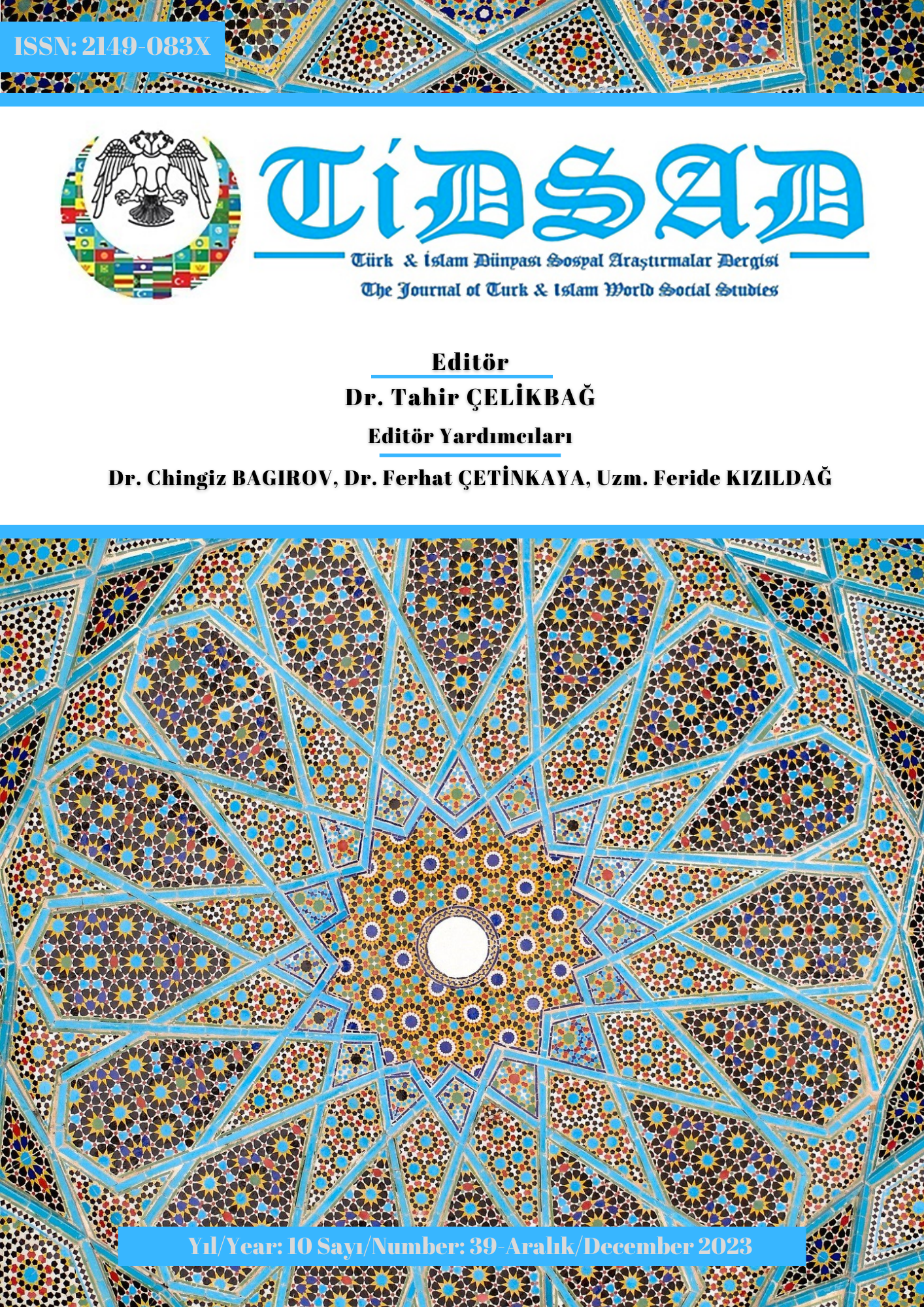Author :
Abstract
İdris-i Bitlisi XV. yüzyılın ortalarında Bitlis bölgesinde doğduğu bilinmektedir. Babası Hüsameddin Ali bölgenin âlim ve şeyhleri arasında yer almaktadır. Hüsameddin Ali Diyarbekir’de Akkoyunlu Hükümdarı Uzun Hasan’ın sarayında münşîlik görevinde bulunmuş ve daha sonra Akkoyunlu Devleti’nin merkezi Tebriz’e taşınınca oraya gitmiştir. Babasıyla birlikte Diyarbekir ve Tebriz’de bulunmuş, akli ve dini ilimleri burada tahsil etmiştir. İdris-i Bitlisi’nin dönemin Akkoyunlu hükümdarı Yakub Bey zamanında Akkoyunlu sarayında münşilik yaptığı ve sultanın çocuklarına lalalık görevinde bulunduğu bilinmektedir. Safevilerin Akkoyunlu Devletinin varlığını ortadan kaldırdığı süreye kadar İdris-i Bitlisi burada yaşamıştır ve daha sonra Akkoyunlu Devleti yıkılınca Bitlisi, Osmanlı Devletine sığınmak durumunda kalmıştır. İdris-i Bitlisi daha önceki eserlerinden dolayı takdir edilmişti ve bu durum Osmanlı sarayında da devam etmiş, itibar sahibi olarak yüksek maaşa bağlanmıştır. İdris-i Bitlisi, II. Bayezid’in isteği üzerine Heşt Bihişt adıyla Osmanlı tarihi kaleme aldı ve eser sultana sunulunca 50.000 akçe nakit ödül aldı. İdris-i Bitlisi Hicaz’dan İstanbul’a döndükten sonra Yavuz Sultan Selim’in hizmetine girdi ve 1514 yılında vuku bulan Çaldıran Savaşında yer aldı. Zafer elde edildikten kısa bir süre sonra Tebriz’e gitti. Orada bir süre kalarak halka vaaz verdi ve Osmanlı idaresine karşı halka sempati kazandırmaya çalıştı. İdris-i Bitlisi askeri yönden birçok zafere imza attı. Safevi kuşatması altındaki Diyarbekir şehrinin kurtarılmasında büyük katkısı bulunmakla birlikte Mardin şehrini de sınırlar içine dâhil etti. Ayrıca bölgedeki aşiret beyleriyle temas kurarak Urmiye, İtâk, İmadiye, Cizre, Eğil, Bitlis, Hizan gibi birçok şehri savaşmadan Osmanlı Devleti sınırlarına dâhil etmeyi başardı. İdris-i Bitlisi Mercidâbık ve Ridâniye savaşlarında aktif rol aldı. İdris-i Bitlisi ömrünün son yıllarında İstanbul’a geldi ve burada ilmî çalışmalar ile meşgul oldu. Ayrıca tahta çıkan Kanûnî Sultan Süleyman’a şark seferi hususunda tavsiyeler vermeyi de ihmal etmedi. Bitlisi altmış beş, yetmiş yaşlarında iken vefat etti (1520). İdris-i Bitlisi’nin tarih yazıcılığı dışında devlet felsefesi, siyaset adabı, inşa geleneği, hükümdar-yönetim fikri ve algısı gibi kökleri Osmanlı-İran medeniyetlerinin arasında taşıyıcı bir köprü niteliği de bulunmaktadır. Bitlisi’nin ifade edilen bu durumu 13. ve 15. yüzyıllar arasında yaşamış Tûsî ve Devvânî gibi filozof ve mutasavvıfların izinden gitmesiyle açıklanabilir. Birkaç devlette görev yapmış, bu kadar tecrübeli bir şahsiyetin Osmanlı devlet geleneği hakkındaki düşüncelerini Heşt Bihişt bağlamında incelemeye çalıştık.
Keywords
Abstract
İdris-i Bitlisi XV. It is known that he was born in the Bitlis region in the middle of the century. His father, Hüsameddin Ali, is among the scholars and sheikhs of the region. Hüsameddin Ali served as a munshi in the palace of Uzun Hasan, the ruler of Akkoyunlu, in Diyarbekir, and later went there when the center of the Akkoyunlu State moved to Tabriz. He was in Diyarbekir and Tabriz with his father and studied mental and religious sciences there. It is known that during the time of Yakub Bey, the Akkoyunlu ruler of the Idris-i Bitlisi period, he worked as a munshi in the Akkoyunlu palace and served as a tutor to the sultan's children. Idris-i Bitlisi lived here until the Safavids abolished the existence of the Akkoyunlu State, and later, when the Akkoyunlu State collapsed, Bitlisi had to take refuge in the Ottoman Empire. İdris-i Bitlisi was appreciated for his previous works, and this situation continued in the Ottoman palace, and he was given a high salary as a respected person. İdris-i Bitlisi, II. At the request of Bayezid, he wrote Ottoman history under the name Heşt Bihişt, and when the work was presented to the sultan, he received a cash reward of 50,000 coins. After İdris-i Bitlisi returned to Istanbul from Hejaz, he entered the service of Yavuz Sultan Selim and took part in the Battle of Çaldıran, which took place in 1514. He went to Tabriz shortly after the victory was achieved. He stayed there for a while, preaching to the public and trying to gain public sympathy against the Ottoman administration. Idris-i Bitlisi achieved many military victories. While he made a great contribution to the liberation of the city of Diyarbekir, which was under Safavid siege, he also included the city of Mardin within its borders. In addition, by establishing contact with the tribal lords in the region, he managed to include many cities such as Urmiye, Itak, Imadiye, Cizre, Eğil, Bitlis, Hizan within the borders of the Ottoman Empire without a fight. İdris-i Bitlisi took an active part in the Mercidâbik and Ridaniye wars. İdris-i Bitlisi came to Istanbul in the last years of his life and was busy with scientific studies here. He also did not neglect to give advice to Suleiman the Magnificent, who ascended to the throne, regarding the eastern expedition. Bitlisi died when he was sixty-five or seventy years old (1520). Apart from his historiography, İdris-i Bitlisi also has roots such as state philosophy, political etiquette, construction tradition, ruler-administration idea and perception, and is a carrier bridge between the Ottoman-Iranian civilizations. This stated situation of Bitlisi can be explained by the fact that it followed in the footsteps of philosophers and Sufis such as Tûsî and Devvânî, who lived between the 13th and 15th centuries. We tried to examine the thoughts of such an experienced person, who served in several states, about the Ottoman state tradition.





